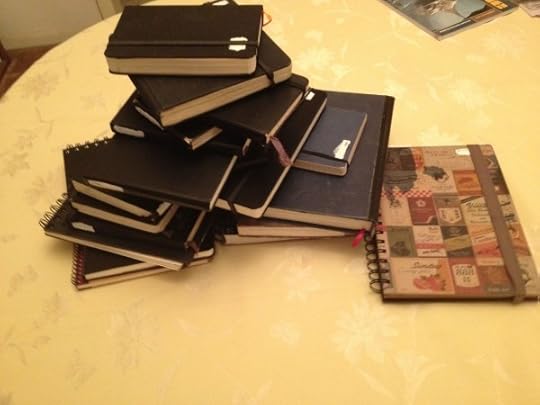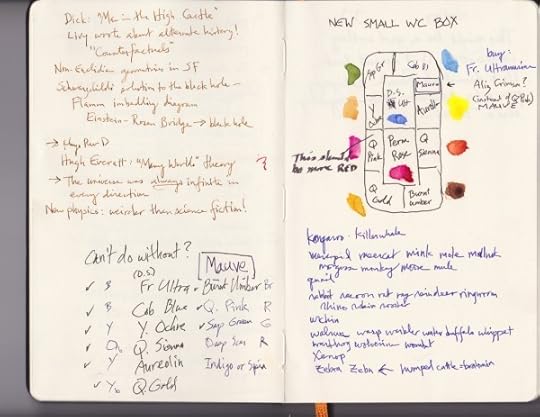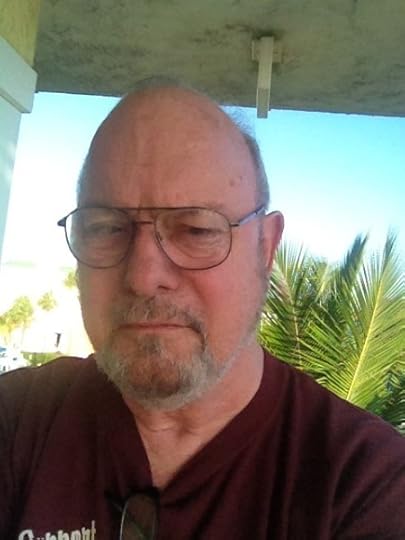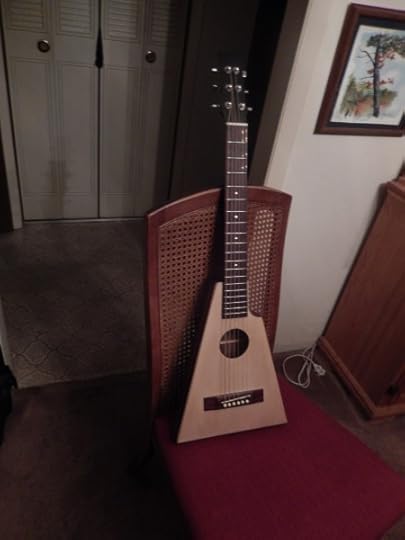Joe Haldeman's Blog, page 19
March 31, 2014
Ed McBain
Talking about Evan Hunter / Ed McBain in sff.net --
I read a bunch of the Ed McBain/Evan Hunter books when I was in college, Dave. Solid stuff still. His Hunt Collins sf novels were super.Googling, I find an essay by Samantha --Novelist Evan Hunter wrote both crime and science fiction using the names Evan Hunter, Hunt Collins, Curt Cannon, Richard Marsten, D.A. Addams and Ted Taine. Born Salvatore Albert Lombino in 1926, the author legally changed his name to Evan Hunter in 1952, but saw the most success from the work he published under the pseudonym Ed McBain. Beginning in 1956, he used that name for the majority of the crime fiction he wrote as part of the long-running “87th Precinct” series.In a 2005 obituary for Hunter, who died of cancer at age 78, The New York Times explained that Hunter initially moved away from his (very Italian) birth name due to prejudice against writers with foreign names. “If you’re an Italian-American, you’re not supposed to be a literate person,” he said in 1981. It added that the Ed McBain and Evan Hunter bylines were kept very separate “to avoid any confusion or shock that readers of Evan Hunter’s “serious” books might feel when exposed to the “mayhem, bloodshed and violence” that were Ed McBain’s meat and drink.”In the summer of 1966 I raced through a box of detective and mystery novels. Ed McBain really stood out. He had the punch of low-class guys like Mickey Spillane but had a real ear for language, and his plots were intricate but not absurd.Wish I could sit down with him and buy him a drink. But you can't make a date in death's dateless night.
Joe
I read a bunch of the Ed McBain/Evan Hunter books when I was in college, Dave. Solid stuff still. His Hunt Collins sf novels were super.Googling, I find an essay by Samantha --Novelist Evan Hunter wrote both crime and science fiction using the names Evan Hunter, Hunt Collins, Curt Cannon, Richard Marsten, D.A. Addams and Ted Taine. Born Salvatore Albert Lombino in 1926, the author legally changed his name to Evan Hunter in 1952, but saw the most success from the work he published under the pseudonym Ed McBain. Beginning in 1956, he used that name for the majority of the crime fiction he wrote as part of the long-running “87th Precinct” series.In a 2005 obituary for Hunter, who died of cancer at age 78, The New York Times explained that Hunter initially moved away from his (very Italian) birth name due to prejudice against writers with foreign names. “If you’re an Italian-American, you’re not supposed to be a literate person,” he said in 1981. It added that the Ed McBain and Evan Hunter bylines were kept very separate “to avoid any confusion or shock that readers of Evan Hunter’s “serious” books might feel when exposed to the “mayhem, bloodshed and violence” that were Ed McBain’s meat and drink.”In the summer of 1966 I raced through a box of detective and mystery novels. Ed McBain really stood out. He had the punch of low-class guys like Mickey Spillane but had a real ear for language, and his plots were intricate but not absurd.Wish I could sit down with him and buy him a drink. But you can't make a date in death's dateless night.
Joe
Published on March 31, 2014 07:15
March 28, 2014
notebooks
I think I got the Moleskine habit in 1989. I was noodling around the web and in a site dedicated to crossword puzzles, I found a reference to Moleskine notebooks. Tracked that down and found a strange and dedicated fandom.
I've been carrying little notebooks since I began carrying a purse in the sixties, but I was never systematic about it until I read that Moleskine blog. Why not? So I started carrying Moleskines, and eventually dedicated a foot or so of bookshelf space to them. They were a random mess, always falling down and put back any which way, so last week I got together all that I could find – nineteen of them – and dated them in a systematic way. A white gouache spot on the upper left front cover.

I have a couple of dozen other (larger) notebooks full of writing; for many years that's been the first stage of any serious piece of fiction. But this pile of Moleskines is a chronological miscellanea. A lot of notes about the books I'm working on. Lots of unrelated lecture notes and research. Pages of equations and library work.
Probably kind of rare. Most writers use computers for this kind of thing nowadays, and I do have megabytes of that stuff. But a fountain pen on paper is more real and more pleasing – and longer-lasting, I think. I've never had a page of handwriting disappear at the wrong stroke of a key.
Most of my notebooks are authentic Moleskines, though a half-dozen are other brands. I pronounce it "mole-ess-ki-nee," so it doesn't sound like some poor little blind creature was harvested for its manufacture. The company that makes them says there's no "official" pronunciation.
I've written two novels completely in Moleskines, Marsbound and Listen to the Raven (retitled The Coming at the editor's request). Carrying a large one around for months does tax its durability, especially if you bike everywhere. The elastic band helps to keep the book together, and of course keeps the book from opening up in your purse. Still, a couple of mine have gotten pretty shabby before the books were done.

This is my current one, a 5" X 8" hand•book, a brand that's not as well known as Moleskine. I've come to prefer them because their paper is slightly better for watercolor and fountain pen ink. Absorbent without being too absorbent. They look about the same, elastic band, black cloth cover with rounded corners.
The blank book I'm using for the current novel is a high-class leatherbound number I bought from a craftswoman in London. I forget how much it cost – less than a hundred pounds – but when I saw it I knew I had to turn it into a book. That could be a drawback, because it looks valuable and steal-able. A chance you take for the pleasure of using it, I guess.
Joe
I've been carrying little notebooks since I began carrying a purse in the sixties, but I was never systematic about it until I read that Moleskine blog. Why not? So I started carrying Moleskines, and eventually dedicated a foot or so of bookshelf space to them. They were a random mess, always falling down and put back any which way, so last week I got together all that I could find – nineteen of them – and dated them in a systematic way. A white gouache spot on the upper left front cover.

I have a couple of dozen other (larger) notebooks full of writing; for many years that's been the first stage of any serious piece of fiction. But this pile of Moleskines is a chronological miscellanea. A lot of notes about the books I'm working on. Lots of unrelated lecture notes and research. Pages of equations and library work.
Probably kind of rare. Most writers use computers for this kind of thing nowadays, and I do have megabytes of that stuff. But a fountain pen on paper is more real and more pleasing – and longer-lasting, I think. I've never had a page of handwriting disappear at the wrong stroke of a key.
Most of my notebooks are authentic Moleskines, though a half-dozen are other brands. I pronounce it "mole-ess-ki-nee," so it doesn't sound like some poor little blind creature was harvested for its manufacture. The company that makes them says there's no "official" pronunciation.
I've written two novels completely in Moleskines, Marsbound and Listen to the Raven (retitled The Coming at the editor's request). Carrying a large one around for months does tax its durability, especially if you bike everywhere. The elastic band helps to keep the book together, and of course keeps the book from opening up in your purse. Still, a couple of mine have gotten pretty shabby before the books were done.

This is my current one, a 5" X 8" hand•book, a brand that's not as well known as Moleskine. I've come to prefer them because their paper is slightly better for watercolor and fountain pen ink. Absorbent without being too absorbent. They look about the same, elastic band, black cloth cover with rounded corners.
The blank book I'm using for the current novel is a high-class leatherbound number I bought from a craftswoman in London. I forget how much it cost – less than a hundred pounds – but when I saw it I knew I had to turn it into a book. That could be a drawback, because it looks valuable and steal-able. A chance you take for the pleasure of using it, I guess.
Joe
Published on March 28, 2014 08:54
February 21, 2014
100 miles from Paradise
We stopped at Key Largo last night. Saw the dilapidated remains of the boat Bogart used in The African Queen, still afloat, if barely.
A hundred miles from Key West; about seventy from where we'll be camping and observing the slightly southern stars. (We can actually see Alpha Centauri and the Southern Cross, near the horizon after midnight.)
Here is my slightly bohemian visage:

Decided to grow out my beard and see whether I like it. Right now it just makes me look like another scruffy retiree.
Joe
A hundred miles from Key West; about seventy from where we'll be camping and observing the slightly southern stars. (We can actually see Alpha Centauri and the Southern Cross, near the horizon after midnight.)
Here is my slightly bohemian visage:

Decided to grow out my beard and see whether I like it. Right now it just makes me look like another scruffy retiree.
Joe
Published on February 21, 2014 05:36
February 17, 2014
joe_haldeman @ 2014-02-17T11:03:00
Couldn't immediately come up with a serious poem for workshop tonight, so I added one to the animals poems . . . .
Killer Whale
People love the killer whale,
from its toothy grin to its too-high tail.
In Sea World pools they used to pet 'em
Until one grinned up at a trainer – and et 'im.
A horrible sight to the humans who watched,
But you really can't say the performance was botched.
It did give the creature a moment of fame . . .
And where did you think that it got that name?
Killer Whale
People love the killer whale,
from its toothy grin to its too-high tail.
In Sea World pools they used to pet 'em
Until one grinned up at a trainer – and et 'im.
A horrible sight to the humans who watched,
But you really can't say the performance was botched.
It did give the creature a moment of fame . . .
And where did you think that it got that name?
Published on February 17, 2014 08:03
February 15, 2014
wisdom from the north
This logical clarification comes from Pat LoBrutto --
For those who haven't heard, Washington State just passed two laws - legalizing gay marriage and recreational use of marijuana.
The fact that gay marriage and marijuana were legalized on the same day makes perfect biblical sense, because Leviticus 20:13 says: "If a man lies with another man they should be stoned."
We just hadn't interpreted it correctly before.
Joe
For those who haven't heard, Washington State just passed two laws - legalizing gay marriage and recreational use of marijuana.
The fact that gay marriage and marijuana were legalized on the same day makes perfect biblical sense, because Leviticus 20:13 says: "If a man lies with another man they should be stoned."
We just hadn't interpreted it correctly before.
Joe
Published on February 15, 2014 17:42
February 14, 2014
V-day
A little while ago I ordered a travel guitar from Charlie Hyde, a local craftsman who had built his own. His progress was delayed by a "small" stroke -- as if any brain ailment is small! -- but he did finish it, and yesterday brought it by.
The new guitar is CUTE, and also musically sound. Did I just write that? Well, it makes a sound, and that sound is quite sound. And musical.
It's better than the other two travel guitars I've had, by virtue of more sophisticated design. Small guitars lack bass response because of the size of the resonating cavity, but the one Charlie made incorporates a small preamp built into the body to passively boost the low notes. It draws very little power; it's run by a hearing-aid battery than has to be replaced every few years.

It has little microswitch controls for the volume and tone of the amplified bass strings. I'll experiment with them today.
Playing on the metal strings did hurt my left hand a little – slightly more tension than the classical nylon strings – but this morning I think the hand feels a little better for the exercise.
(The hand has been bothering me since I hurt it packing to leave MIT in mid-December. I went to the VA doctor a couple of days ago, and he said that I should ignore the pain and exercise it.)
It's Valentine's Day, which is also an anniversary for us; we met at a Valentine's Day dance in (gasp) 1961. By improbable coincidence, I found a card that actually has 53 hearts in its design.
(I didn't count the hearts in the store. Figured to add however many with a red pen. But knock me down with a feather in space, as Tom Corbett, Space Cadet, will say some day in the future. It already had exactly fifty-three.)
I also gave her an oriole/hummingbird feeder that features cups of jelly. She gave me a hand-crafted camp knife she found at the Medieval Faire.
So happy V-day, everybody! Take heart!
Joe
(If any guitar people are interested, here's the technical note about the guitar's wood from its designer -- )
John Calkin travel guitar (made from a kit by Charlie Hyde)
Butternut. Also called white walnut, butternut is softer and less likely to be figured than black walnut. It's not really white, but a creamy light brown. Flatsawn stock shows prominent lines from the growth rings. I've never come across a quartersawn board of butternut, nor a piece large enough to make into a full-size guitar, much to my regret. The trees do grow large enough, however. The wood bends nicely, but go easy on the water as it is more absorbent than walnut or mahogany. It's a fuzzy wood, easy to sand, but the fuzz won't stay down. A long series of whiskerings will deal with it, but I normally sand to 220 grit, shoot a sealer coat which raises the grain and locks it, then sand with 320 to remove the whiskers. I've only gloss-finished butternut with CrystaLac and found pore filling unnecessary. A lacquer job might go faster if filler was used. On my low-end travel guitars, I shoot a coat of lacquer, sand with 320, then shoot two more coats, polish quickly by hand to make the surface silky, and call it quits. It's an attractive look, but I would never do it on an expensive instrument.
The new guitar is CUTE, and also musically sound. Did I just write that? Well, it makes a sound, and that sound is quite sound. And musical.
It's better than the other two travel guitars I've had, by virtue of more sophisticated design. Small guitars lack bass response because of the size of the resonating cavity, but the one Charlie made incorporates a small preamp built into the body to passively boost the low notes. It draws very little power; it's run by a hearing-aid battery than has to be replaced every few years.

It has little microswitch controls for the volume and tone of the amplified bass strings. I'll experiment with them today.
Playing on the metal strings did hurt my left hand a little – slightly more tension than the classical nylon strings – but this morning I think the hand feels a little better for the exercise.
(The hand has been bothering me since I hurt it packing to leave MIT in mid-December. I went to the VA doctor a couple of days ago, and he said that I should ignore the pain and exercise it.)
It's Valentine's Day, which is also an anniversary for us; we met at a Valentine's Day dance in (gasp) 1961. By improbable coincidence, I found a card that actually has 53 hearts in its design.
(I didn't count the hearts in the store. Figured to add however many with a red pen. But knock me down with a feather in space, as Tom Corbett, Space Cadet, will say some day in the future. It already had exactly fifty-three.)
I also gave her an oriole/hummingbird feeder that features cups of jelly. She gave me a hand-crafted camp knife she found at the Medieval Faire.
So happy V-day, everybody! Take heart!
Joe
(If any guitar people are interested, here's the technical note about the guitar's wood from its designer -- )
John Calkin travel guitar (made from a kit by Charlie Hyde)
Butternut. Also called white walnut, butternut is softer and less likely to be figured than black walnut. It's not really white, but a creamy light brown. Flatsawn stock shows prominent lines from the growth rings. I've never come across a quartersawn board of butternut, nor a piece large enough to make into a full-size guitar, much to my regret. The trees do grow large enough, however. The wood bends nicely, but go easy on the water as it is more absorbent than walnut or mahogany. It's a fuzzy wood, easy to sand, but the fuzz won't stay down. A long series of whiskerings will deal with it, but I normally sand to 220 grit, shoot a sealer coat which raises the grain and locks it, then sand with 320 to remove the whiskers. I've only gloss-finished butternut with CrystaLac and found pore filling unnecessary. A lacquer job might go faster if filler was used. On my low-end travel guitars, I shoot a coat of lacquer, sand with 320, then shoot two more coats, polish quickly by hand to make the surface silky, and call it quits. It's an attractive look, but I would never do it on an expensive instrument.
Published on February 14, 2014 06:22
February 1, 2014
pearls
The Writers Almanac this morning had these words of wisdom from S.J. Perelman --
"I guess I'm just an old mad scientist at bottom. Give me an underground laboratory, half a dozen atom-smashers, and a beautiful girl in a diaphanous veil waiting to be turned into a chimpanzee, and I care not who writes the nation's laws."
Joe
"I guess I'm just an old mad scientist at bottom. Give me an underground laboratory, half a dozen atom-smashers, and a beautiful girl in a diaphanous veil waiting to be turned into a chimpanzee, and I care not who writes the nation's laws."
Joe
Published on February 01, 2014 05:36
January 30, 2014
Three lines
Three lines by Ted Hughes (1930-1998) that contain more "story" than a lot of novels: "Ten years after your death / I meet, on a page of your journal / The shock of your joy."
A write-your-own-story kit.
Joe
A write-your-own-story kit.
Joe
Published on January 30, 2014 15:00
January 27, 2014
numinosity
Talking about numinous things in sff.net . . .
There was once was a parson so numinous
His earthly excretions were luminous.
In the middle of the night
His outhouse glowed bright
With a fuel that was hardly bituminous.
Burma shave, need one say.
Published on January 27, 2014 19:00
January 23, 2014
like, whatever
I just came across this bit of wisdom in Pepys's diary --
"And by the way in discourse [Dr. Thomas Fuller] tells me that the best way of beginning a sentence, if a man should be out and forget his last sentence (which he never was), that then his last refuge is to begin with an Utcunque."
The translation of that word is . . . "whatever." The more things change, the more, you know, they become.
Joe
"And by the way in discourse [Dr. Thomas Fuller] tells me that the best way of beginning a sentence, if a man should be out and forget his last sentence (which he never was), that then his last refuge is to begin with an Utcunque."
The translation of that word is . . . "whatever." The more things change, the more, you know, they become.
Joe
Published on January 23, 2014 06:28
Joe Haldeman's Blog
- Joe Haldeman's profile
- 2191 followers
Joe Haldeman isn't a Goodreads Author
(yet),
but they
do have a blog,
so here are some recent posts imported from
their feed.



